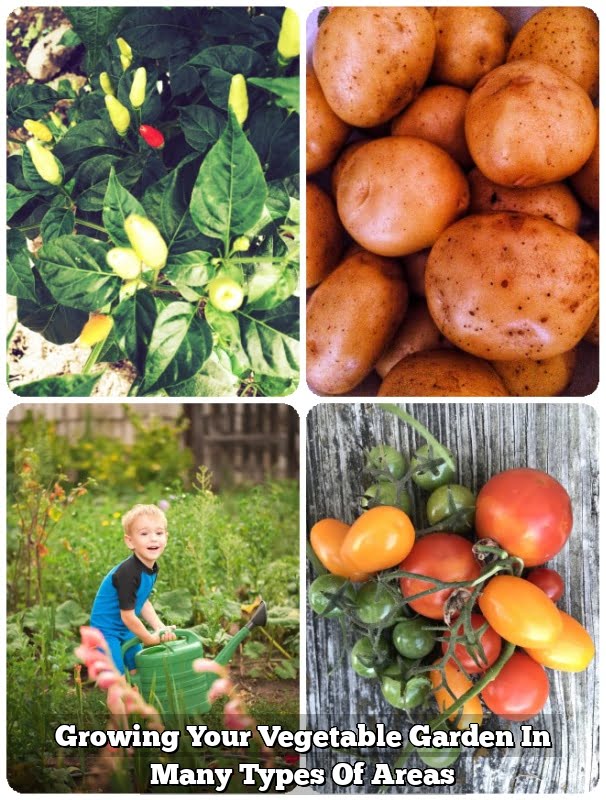Community vegetable gardens in urban areas have become increasingly popular as a means of promoting sustainable living, food security, and community engagement. However, these initiatives are not without their challenges.
This article will explore the limitations of community vegetable gardens in urban areas, including the lack of space, soil contamination, limited resources, accessibility issues, community dynamics, seasonal constraints, and regulatory hurdles. By examining these obstacles, we can better understand how to overcome them and embrace the opportunities that community vegetable gardens present.
One of the primary limitations of community vegetable gardens in urban areas is the lack of space. Finding suitable land for these gardens can be a significant challenge in densely populated cities where open green spaces are limited. Furthermore, soil contamination poses a risk to the viability and safety of urban vegetable gardens as toxins and pollutants can affect the quality of produce grown.
Securing funding and support for community vegetable gardens in urban areas is also a struggle due to limited resources. Without adequate financial backing and resources, maintaining and expanding these initiatives becomes difficult. Additionally, the location of community gardens in urban areas can limit participation, especially for marginalized communities with accessibility barriers. Addressing these challenges is crucial for the future success of community vegetable gardens in urban areas.
Lack of Space
Community vegetable gardens in urban areas face a significant challenge when it comes to finding suitable land for these initiatives. The lack of space in densely populated urban environments can make it difficult to secure a location for community gardens, limiting the potential for local residents to participate in growing their own produce.
Competition for Land Use
One of the primary limitations of community vegetable gardens in urban areas is the competition for land use. In highly developed cities, open spaces are often at a premium, and there may be significant pressure to allocate available land for commercial or residential development rather than community garden projects. This can create obstacles for advocates of urban agriculture who are seeking suitable locations to establish vegetable gardens that are accessible to local residents.
Cost of Land Acquisition
Even when potential plots of land are identified for community vegetable gardens, the cost of acquiring these spaces can present a major barrier. Urban real estate prices may be prohibitively expensive for community organizations or individuals who wish to establish and maintain a garden. Moreover, ongoing expenses related to leasing or purchasing land can strain the resources of those involved in community gardening efforts.
Land Quality and Suitability
In addition to issues of space and cost, the quality and suitability of available land can also pose challenges for community vegetable gardens in urban areas. Soil contamination, inadequate drainage, and limited sunlight due to surrounding infrastructure or buildings are just some examples of factors that can impact the viability of urban gardening projects. Therefore, addressing these concerns is crucial for ensuring that community vegetable gardens have access to safe and productive land within urban environments.
Soil Contamination
Understanding Soil Contamination
Soil contamination in urban areas is often the result of industrial activities, improper waste disposal, and pollution from vehicles. These contaminants can include heavy metals, petroleum products, pesticides, and other harmful chemicals that pose a threat to human health when present in soil and plants.
Impact on Urban Vegetable Gardens
When urban vegetable gardens are established in areas with contaminated soil, there is a significant risk of toxins being absorbed by the plants. This can lead to the ingestion of contaminated produce by gardeners and community members who consume the harvested vegetables. Additionally, contaminated soil can affect plant growth and development, leading to reduced yield and poor crop quality.
Addressing Soil Contamination
To mitigate the limitations of soil contamination in urban vegetable gardens, it is crucial to conduct thorough testing of the soil before establishing a garden. Remediation efforts such as phytoremediation, which uses specific plants to remove contaminants from the soil, may also be necessary to make the land suitable for gardening.
In some cases, raised bed gardening or container gardening techniques can be used as alternatives to traditional in-ground planting to avoid direct contact with contaminated soil. By addressing soil contamination proactively, urban communities can minimize the risks associated with growing vegetables in polluted environments while still enjoying the benefits of community gardening.
Limited Resources
Community vegetable gardens in urban areas face a multitude of challenges, one of the most significant being the struggle to secure adequate funding and support. With limited resources, community organizers and gardeners often find themselves unable to fully realize the potential of their projects, hindering their ability to provide fresh produce to the local community.
One of the main limitations of community vegetable gardens in urban areas is the lack of financial resources available to support and maintain them. Without sufficient funding, it can be challenging to purchase essential gardening supplies, such as seeds, tools, and compost. Additionally, ongoing costs such as water bills and maintenance expenses can quickly add up, making it difficult for community gardens to remain sustainable in the long term.
Moreover, limited support from local government agencies or non-profit organizations can further exacerbate the funding challenges faced by urban community gardens. Many cities may prioritize other initiatives over community gardening programs, leaving organizers and volunteers to rely heavily on fundraising efforts and donations.
As a result, the potential for growth and expansion of these vital community resources is stifled by financial constraints. Finding creative solutions to address these limitations will be crucial in ensuring that community vegetable gardens can continue to thrive in urban areas.
Accessibility Issues
Community vegetable gardens in urban areas face a number of challenges that can limit participation from the community. One of the major limitations is the issue of accessibility. The location of community gardens can have a significant impact on who is able to participate and benefit from them.
Some key factors that contribute to accessibility issues in urban community gardens include:
- Proximity to public transportation: Lack of convenient access to public transportation can make it difficult for people without personal vehicles to reach community gardens.
- Physical barriers: Gardens located in areas with physical barriers such as highways or industrial zones may be difficult for residents to access, particularly if there are safety concerns.
- Affordability: If community gardens are located in neighborhoods with limited resources, residents may struggle to afford transportation to and from the garden or may not have the resources to participate.
Addressing these accessibility issues is crucial for ensuring that community vegetable gardens are truly accessible and inclusive for all members of the urban community. This may require strategic planning and collaboration with local government, transportation authorities, and other relevant stakeholders.
Creating a sense of ownership and engagement within the local urban community is also essential for overcoming accessibility limitations. Involving diverse voices and perspectives in the decision-making processes related to the location and design of community gardens can help ensure that they are accessible and welcoming spaces for all residents, regardless of their background or ability.
By addressing these accessibility issues, community vegetable gardens in urban areas can better serve their intended purpose as vibrant communal spaces that foster health, empowerment, and connection among city dwellers.
Community Dynamics
Some of the key social and cultural barriers in urban vegetable gardens include:
1. Language barriers: Many urban communities are diverse, with residents speaking different languages. This can create communication challenges, making it difficult for garden organizers to effectively engage with all members of the community.
2. Cultural norms and traditions: Different cultural practices and beliefs around gardening and food can impact participation in community vegetable gardens. It is important to understand and respect these cultural differences to create a welcoming environment for everyone.
3. Socio-economic disparities: Urban areas often have a mix of residents from different socio-economic backgrounds. Access to resources, education, and time can vary significantly among community members, posing challenges to equal participation in vegetable gardening initiatives.
Addressing these social and cultural barriers requires proactive measures such as:
By addressing these social and cultural barriers, urban vegetable gardens can become more inclusive and truly reflect the diversity of the communities they serve. This inclusivity will be vital in overcoming the limitations of community vegetable gardens in urban areas, allowing for greater participation and ultimately, a stronger sense of community ownership of these valuable green spaces.
Seasonal Constraints
Urban environments present unique challenges for the growth and maintenance of community vegetable gardens, particularly in relation to seasonal constraints. The limited space available in cities often means that community gardens are subject to the changing climate and weather conditions, which can have a significant impact on the success of the vegetables being grown. Additionally, urban areas may experience higher temperatures and greater pollution levels, which can further limit the growth and productivity of these gardens.
The seasonal constraints in urban environments also affect the types of vegetables that can be successfully grown. For example, certain vegetables may require specific conditions that are difficult to replicate in an urban setting. Furthermore, the shorter growing season in many urban areas means that gardeners must carefully plan and manage their crops to ensure a successful harvest.
Research has shown that seasonal constraints are one of the primary limitations of community vegetable gardens in urban areas. The unpredictable nature of weather patterns and environmental factors can make it difficult for gardeners to maintain consistent growth and yields throughout the year. This is particularly challenging for communities who rely on these gardens as a source of fresh produce, as they may struggle to meet their nutritional needs during certain times of the year.
| Seasonal Constraints in Urban Environments | Impact |
|---|---|
| Limited space and changing climate | Affects success and productivity of vegetable gardens |
| Difficulty growing specific vegetables | Shorter growing season requires careful planning |
| Unpredictable weather patterns affect consistent growth and yields | Challenges for communities relying on gardens as a food source |
Regulatory Hurdles
Community vegetable gardens in urban areas face a myriad of regulatory hurdles when it comes to navigating legal and zoning obstacles. One major limitation is the complex web of city ordinances and regulations that dictate where community gardens can be located, how they must be maintained, and what types of crops are allowed to be grown.
Many cities have restrictive zoning laws that make it difficult to find suitable land for community gardens, leading to a lack of space for these initiatives.
Moreover, soil contamination is another significant regulatory challenge for urban vegetable gardens. The risk of toxins and pollution affecting the soil can lead to potential health hazards for those consuming the produce. In some instances, local authorities may require extensive testing and remediation efforts before permitting gardening activities in certain areas, adding a layer of complexity and cost to community garden projects.
In addition to legal and environmental constraints, limited resources also pose a significant barrier for community vegetable gardens in urban areas. Securing funding and support for these initiatives can be challenging, especially when competing with other municipal priorities.
This lack of financial backing can impede the development and maintenance of community gardens, limiting their potential impact on local food security and access. Overall, navigating through these regulatory hurdles requires dedicated advocacy efforts, strategic partnerships with local authorities, and innovative solutions to overcome limitations while embracing opportunities.
| Challenges | Impact |
|---|---|
| Lack of suitable land due to zoning laws | Limiting available space for community gardens |
| Risk of soil contamination | Potential health hazards for consumers |
| Limited funding and support | Constraints on development and maintenance |
Conclusion
In conclusion, community vegetable gardens in urban areas face a myriad of challenges that can limit their effectiveness and impact. Whether it’s the lack of suitable land, soil contamination, limited resources, accessibility issues, community dynamics, seasonal constraints, or regulatory hurdles, there are numerous obstacles to overcome. However, despite these limitations, there are still opportunities to be seized and solutions to be found.
One potential solution to the limitations of community vegetable gardens in urban areas is implementing vertical gardening techniques. By utilizing vertical space such as walls or trellises, urban gardeners can maximize their growing area and produce a greater yield in a limited space. Additionally, raised beds can help mitigate issues with contaminated soil and provide better control over the growing environment.
Furthermore, collaboration with local governments and organizations can help overcome some of the funding and regulatory hurdles that community vegetable gardens often face. By working together to secure support and navigate zoning regulations, urban gardeners can create sustainable and thriving community gardens for all residents to enjoy. Despite the limitations, with innovative solutions and strong partnerships, the future of community vegetable gardens in urban areas is bright and full of potential for growth.
Frequently Asked Questions
What Are the Drawbacks of Community Gardens?
The drawbacks of community gardens include issues with maintenance, lack of community participation, and possible conflicts among gardeners. Additionally, there may be challenges with securing funding and managing the garden effectively.
What Might Be Some Challenges of Establishing an Urban Community Garden?
Some challenges of establishing an urban community garden could include finding suitable land or space, dealing with potential soil contamination, navigating zoning regulations, and obtaining the necessary permits and approvals from local authorities. Additionally, there may be resistance from neighboring residents or businesses.
Why Is It Difficult to Have a Garden in an Urban Area?
It is difficult to have a garden in an urban area due to limited space, poor soil quality, lack of sunlight, and potential exposure to pollution. Urban areas often have high property values and competing land use demands, making it challenging to dedicate space to gardening endeavors.

If you’re looking to get into vegetable gardening, or are just looking for some tips on how to make your current garden better, then you’ve come to the right place! My name is Ethel and I have been gardening for years. In this blog, I’m going to share with you some of my best tips on how to create a successful vegetable garden.





